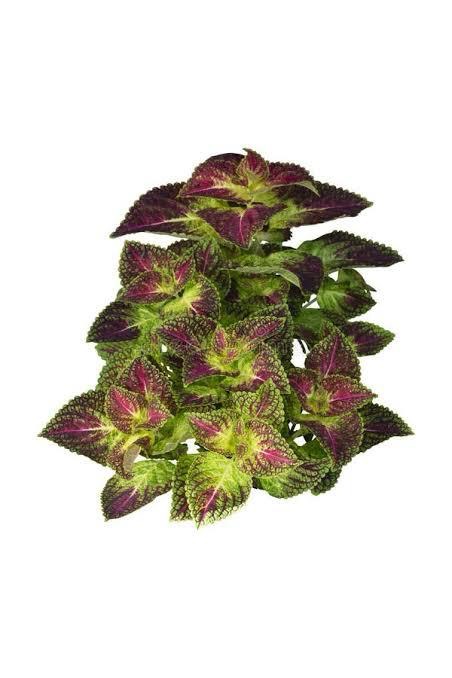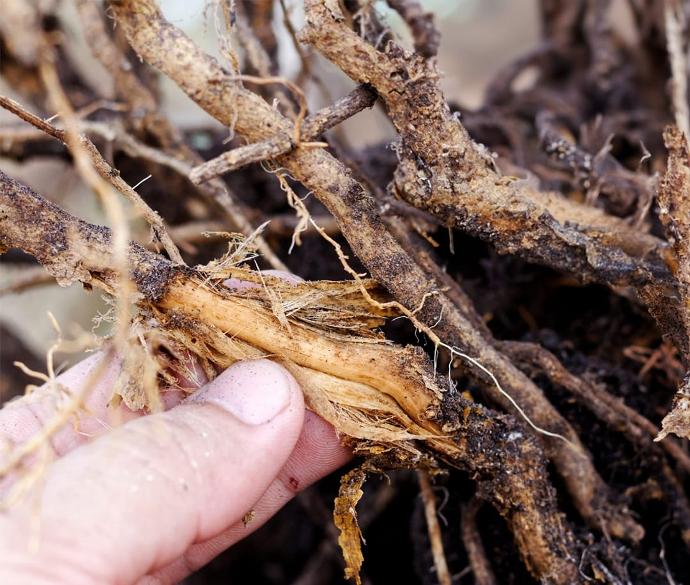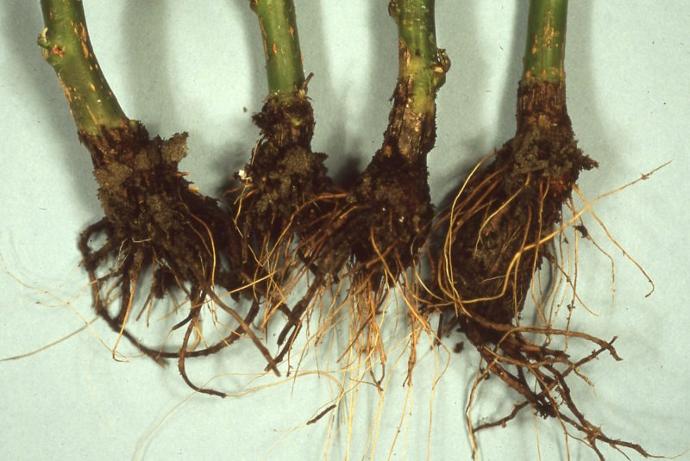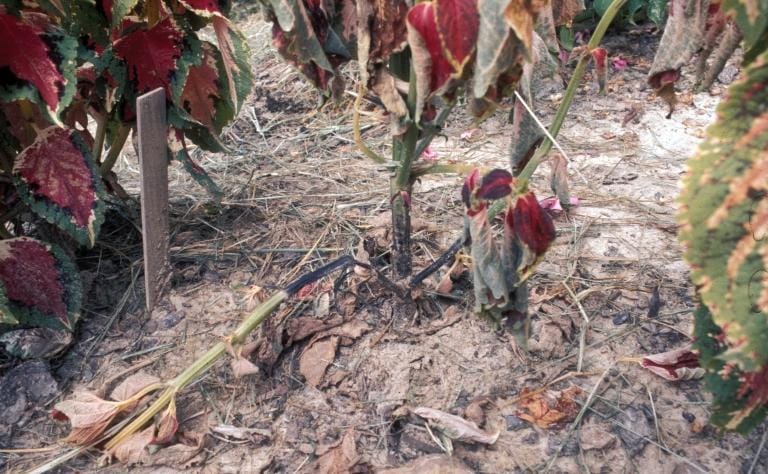Thai coleus Plant
Thai Coleus, possibly referring to a specific Coleus variety, may have varying care requirements. Generally, plant in well-draining soil with partial to full sun exposure. Water consistently and pinch back growing tips for bushier growth. Pruning and fertilizing practices may vary based on the specific characteristics of this plant.
Habit
Shrub
Height
0.3 to 0.6 m
Growth
moderate
Soil
Well-drained, Loamy
Shade
Full Sun to partial shade
Moisture
Moist
Edible
No
Medicinal
No
Origin
Southeast Asia
Climatic Condition
Tropical, Subtropical
Temperature (°)
20°C to 30°C
Humidity (%)
60% to 80%
Potting media
50% Loam, 40% Sand, 10% Compost
Fertilizers
Organic Fertilizer
Watering
Regular watering
Plant Weight
0.2 to 0.3 kg
Flowering Time
Spring to Summer
Soil Ph level
6.0 to 7.0
Water Ph level
6.0 to 7.0
Soil EC
0.5 to 1.0 mS/cm
Yield Per Plant
2 to 3 kg per plant
NPK ratio
10:10:10
life Span
2 to 3 years
Health Benefits
Ornamental, Medicinal
Suggested Grow Media or Potting Mix ?
40% peat moss, 30% compost, 30% perlite
Suggested Fertigation/Fertilizers
Fertilize every 2 weeks with a balanced, water-soluble fertilizer.
Common Diseases and Remedies
HEALTH BENEFITS
1. Antioxidant properties: Thai coleus contains antioxidants that can help protect against oxidative stress and inflammation.
2. May help reduce inflammation: The antioxidants and other compounds in Thai coleus may help reduce inflammation and improve overall health.
3. May help improve respiratory health: Thai coleus's antioxidants and other compounds may also help improve respiratory health and reduce the symptoms of asthma.
What is the Thai coleus plant?
The Thai coleus plant, scientifically known as Plectranthus scutellarioides, is a type of flowering plant in the Lamiaceae family (Lamiaceae). Native to Southeast Asia, it is popular for its colorful leaves that come in various shades of green, pink, purple, and red. Thai coleus is often grown as an ornamental garden plant or indoor houseplant.
What Are The Different Types Of Thai Coleus
Red Frill
Deeply lobed leaves with red underside and green edges.
Black Dragon
Features deep purplish-black leaves with light green edges.
Kong Rose
A combination of pink, green and cream colors with large wavy leaves.
Chocolate Mint
Characterized by chocolate brown leaves and mint green edges.
Pink Chaos
Features a chaotic pattern that mixes pink, green, and cream colors.
How do you care for Thai Coleus?
Location
Thai coleus plants grow in warm tropical climates. Prefers well-drained soil and partial shade to full sun, but can tolerate some shade. In cooler climates, it is often grown as an annual or ornamental plant. It can be grown outdoors in USDA hardiness zones 10 to 11, but in colder regions it is commonly grown in containers and brought indoors during the winter. Indoors, it requires bright, indirect light and regular watering to keep the soil evenly moist but not soggy.
Sunlight
Thai coleus plants usually prefer partial shade to full sun. In hot climates, it is best to provide afternoon shade to protect from the strong sun and prevent leaf burn. However, it can withstand a variety of lighting conditions, including bright indirect light indoors. If growing indoors, ideally place it near a window where it can get plenty of light without being exposed to direct sunlight for long periods of time. Overall, providing bright indirect light promotes healthy growth and vibrant leaf color.
Soil
Thai coleus plants prefer well-drained soil that is rich in organic matter. The suitable potting soil for Thai coleus should be loose, airy and fertile. You can use commercial potting mixes designed for indoor or outdoor container gardening, or create your own mix by combining equal parts peat moss, perlite, compost or well-rotted organic material.
Hydration
Thai coleus plants prefer evenly moist soil, but not waterlogged soil. It is important to keep the soil evenly moist and allow the top inch of soil to dry slightly between waterings. When watering, make sure to let it soak into the soil well so that excess water can drain away.
Nourishment
To nourish your Thai coleus plants and promote healthy growth, feed them with a balanced fertilizer during the growing season (usually spring through early fall). Choose a water-soluble fertilizer for indoor or outdoor houseplants and follow the manufacturer's instructions for dilution and frequency of use.
Issues
Thai coleus plants are generally easy to grow, but some common problems can occur:
1. *Overwatering:* Thai coleus Plants prefer moist soil, but too much water can cause root rot, which is caused by fungi. disease. Make sure the soil is well-drained and allow the top 1 inch of soil to dry slightly between waterings.
2. *Lack of water:* Conversely, letting the soil become too dry can lead to wilting and stress. Be sure to water your plant when the top inch of soil feels dry.
3. *Pests:* Some of the most common pests that can affect Thai coleus plants include aphids, spider mites, and whiteflies. Inspect plants regularly for signs of pests such as distorted leaves, sticky residue, and small nests, and promptly treat infestations with insecticidal soap or neem oil.
What Are The Benefits Of The Thai Coleus?
The Thai coleus plant has the following potential benefits:
1. *Ornamental Value:* Thai coleus plants are prized for their colorful foliage that adds beauty and visual interest to gardens, landscapes, and interiors.
2. *Air Purification:* Like many houseplants, Thai coleus plants can help improve indoor air quality by absorbing toxins and pollutants from the air through their leaves.
3. *Therapeutic Uses:* In traditional medicine, coleus plants are used for a variety of medical purposes, including the treatment of digestive, respiratory, and skin diseases. However, further research is needed to confirm its effectiveness for these purposes.
4. *Aesthetic Benefits:* The vibrant leaf color of the Thai coleus plant has uplifting and stress-reducing effects, improving the overall ambience of indoor and outdoor spaces.
5. *Easy to grow:* Thai coleus plants are relatively low-maintenance and easy to grow, making them suitable for novice gardeners and houseplant enthusiasts
FAQ'S About Growing Thai Coleus
Watering
Soil
Fertilization
Traditional Medicine
Aromatherapy


